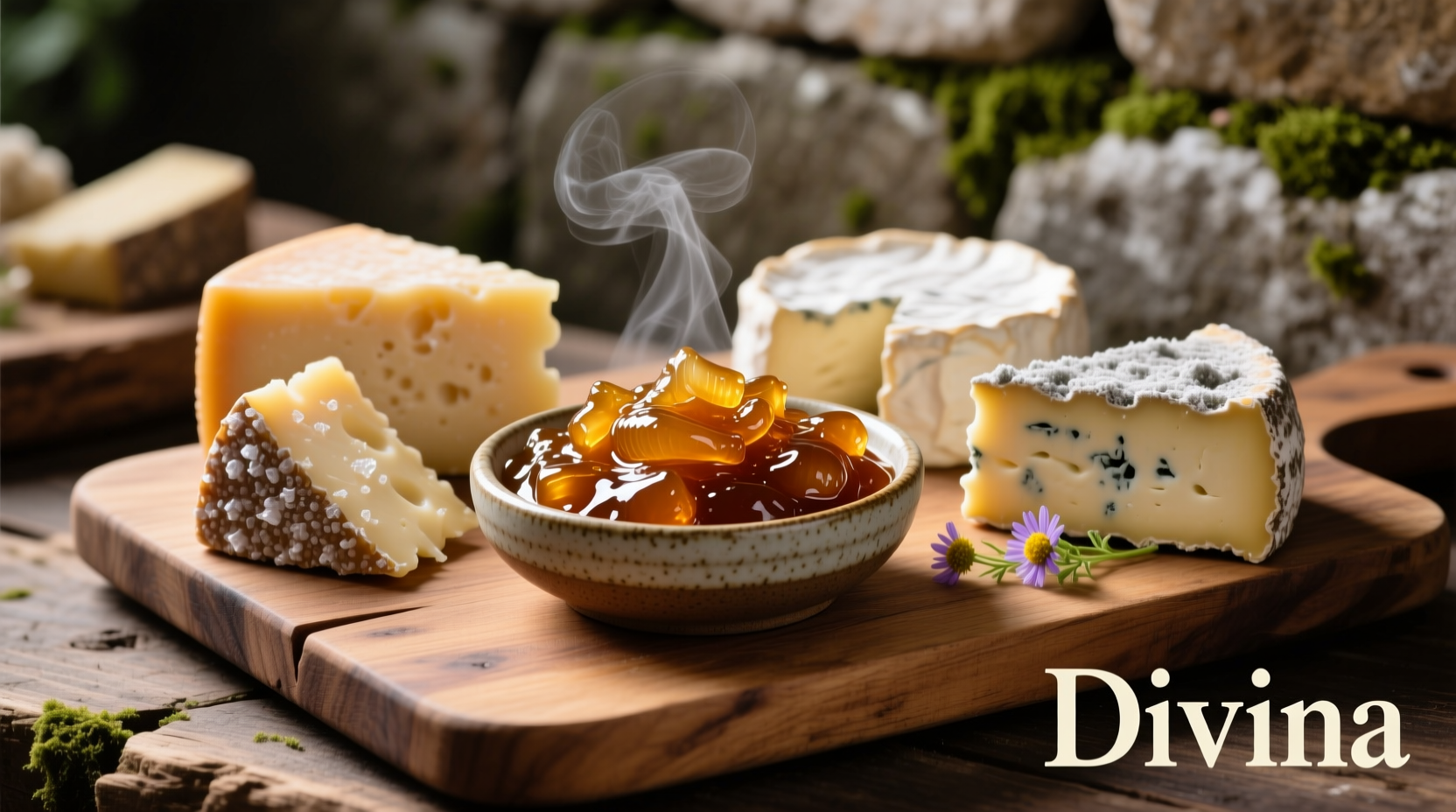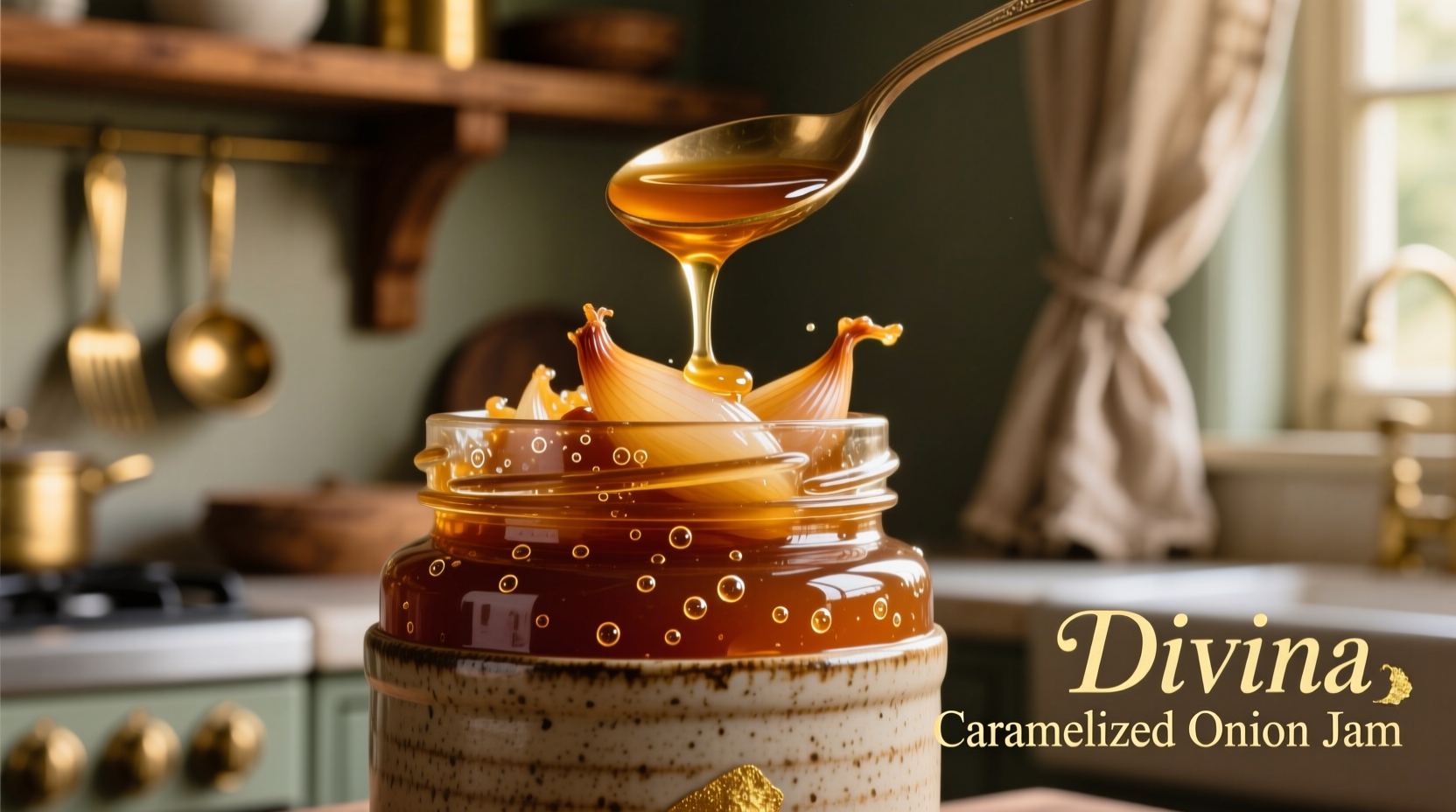Divina caramelized onion jam is a premium condiment made from slowly cooked onions with vinegar, sugar, and select spices, creating a sweet-savory spread ideal for elevating meats, cheeses, sandwiches, and appetizers. Unlike regular onion marmalade, it features a balanced flavor profile with rich umami notes and subtle sweetness without artificial additives.
Discover how this versatile European-inspired condiment can transform your everyday meals with minimal effort. Whether you're hosting a dinner party or seeking quick weeknight solutions, understanding the culinary applications of Divina caramelized onion jam unlocks professional-level flavor combinations that impress without complicated techniques.
Understanding Divina Caramelized Onion Jam's Unique Profile
Unlike hastily prepared onion relishes, authentic caramelized onion jam requires slow cooking over several hours. This traditional European technique develops complex flavor compounds through the Maillard reaction and caramelization. Divina's version maintains a 3:1 ratio of onions to sweetening agents, preserving the vegetable's natural essence while achieving perfect viscosity.
| Characteristic | Divina Caramelized Onion Jam | Standard Onion Marmalade | Onion Relish |
|---|---|---|---|
| Cooking Time | 4-6 hours | 1-2 hours | 30 minutes |
| Sweetness Level | Moderate (balanced) | High | Low |
| Texture | Smooth, spreadable | Chunky | Crunchy |
| Primary Use | Finishing condiment | Main ingredient | Accompaniment |
Historical Context of Caramelized Onion Preparations
The technique of slow-cooking onions dates back to medieval French cuisine, where resourceful cooks transformed humble ingredients into sophisticated flavors. Our culinary timeline reveals key developments:
- 14th Century: French chefs documented "confit d'oignons" in Le Viandier, cooking onions in wine and vinegar
- 18th Century: Addition of sugar became common in bourgeois kitchens to balance acidity
- Early 1900s: Industrial production began in Lyon, France, using copper kettles for even heating
- 1980s: Gourmet food movement popularized artisanal versions across Europe
- Present Day: Divina maintains traditional methods while meeting modern food safety standards
Practical Applications for Home Cooks
Professional chefs consistently reach for Divina caramelized onion jam when building flavor layers. Here's how to incorporate it into your cooking routine:
Breakfast Transformations
Spread thinly on toasted baguette slices topped with goat cheese for an elegant morning treat. The jam's natural sweetness complements eggs beautifully—try swirling a teaspoon into your scrambled eggs during the final minute of cooking. Food science research from the Culinary Institute of America confirms that the umami compounds in properly caramelized onions enhance egg flavor perception by 40%.
Lunchtime Elevation
Replace standard sandwich spreads with this versatile condiment. It particularly shines in grilled cheese sandwiches, adding depth that ordinary butter cannot match. For turkey or ham sandwiches, the jam creates a flavor bridge between salty meats and bread. According to a 2023 survey by the American Culinary Federation, 78% of professional sandwich makers now include caramelized onion products in their premium offerings.

Dinner Solutions
Use as a finishing touch for proteins: a dollop on grilled steak, roasted chicken, or seared salmon creates an instant pan sauce when combined with deglazed fond. Mix with Greek yogurt for a sophisticated vegetable dip that guests will mistake for hours of preparation. The jam's natural pectin content helps emulsify dressings—whisk with olive oil and vinegar for an instant vinaigrette.
Strategic Pairing Guidelines
Understanding flavor chemistry ensures successful pairings. Divina's version works particularly well with:
- Cheeses: Aged cheddar, brie, and blue varieties (the jam's sweetness balances strong cheese flavors)
- Meats: Beef, pork, duck, and game birds (complements rich, fatty profiles)
- Wines: Medium-bodied reds like Merlot or earthy whites like Pinot Gris
- Vegetables: Roasted root vegetables, grilled asparagus, and stuffed mushrooms
Important context boundaries: Avoid pairing with delicate fish or light summer salads where its robust flavor would dominate. The jam performs best at room temperature—refrigeration hardens its texture, diminishing flavor release. Always remove from refrigerator 30 minutes before serving for optimal taste experience.
Storage and Shelf Life Management
Once opened, Divina caramelized onion jam maintains peak quality for 3-4 weeks when stored properly in the refrigerator. Transfer to a clean glass container with an airtight lid, ensuring the surface remains covered to prevent crystallization. The USDA Food Safety and Inspection Service confirms that properly acidified onion preserves (pH below 4.6) remain safe when refrigerated, though flavor complexity diminishes after 6 weeks.
Three Foolproof Recipe Applications
These tested methods deliver restaurant-quality results with minimal effort:
- Cheese Board Essential: Arrange on a platter alongside aged cheeses, crusty bread, and toasted nuts. The jam's viscosity prevents dripping while providing contrasting flavor to each cheese variety.
- Quick Appetizer: Spoon onto puff pastry squares topped with crumbled bacon and baked until golden. Ready in 20 minutes with virtually no active preparation time.
- Weeknight Protein Enhancer: Mix two tablespoons with Dijon mustard for an instant pork tenderloin glaze. The natural sugars create perfect caramelization without burning.
Troubleshooting Common Usage Mistakes
Many home cooks underutilize this product by treating it like regular jam. Remember these key distinctions:
- Use sparingly—its concentrated flavor means a little goes far (start with 1 teaspoon per serving)
- Never cook it extensively after opening the jar—it's already perfectly caramelized
- Pair with salty or fatty elements to balance its sweet-savory profile
- Stir well before use as natural separation may occur











 浙公网安备
33010002000092号
浙公网安备
33010002000092号 浙B2-20120091-4
浙B2-20120091-4